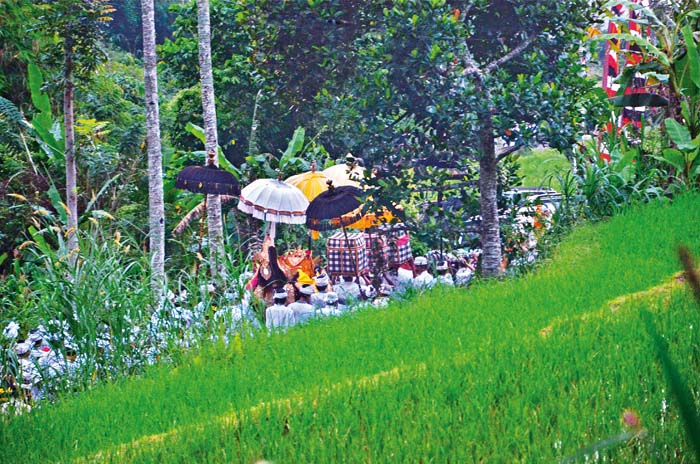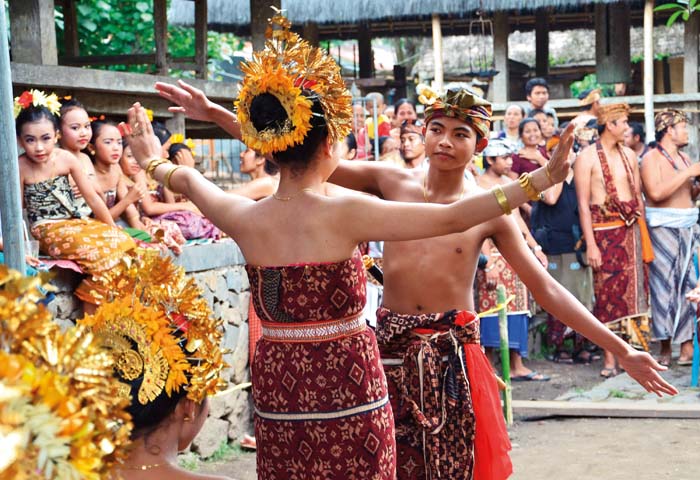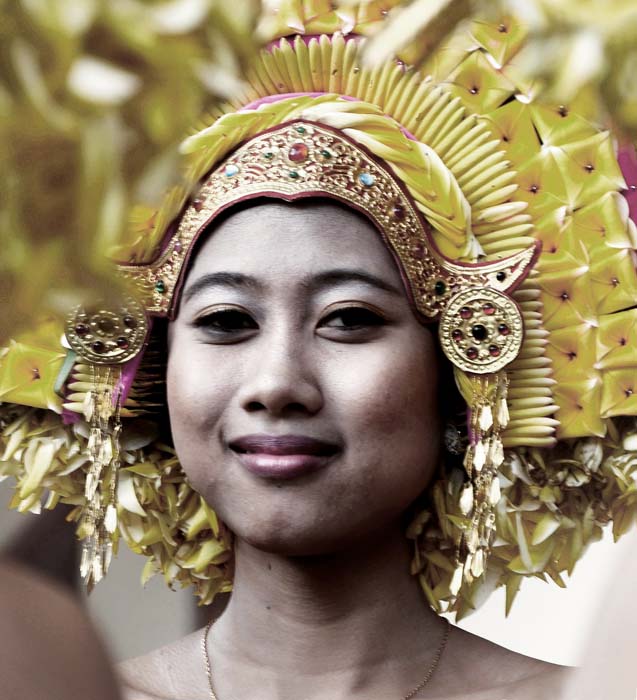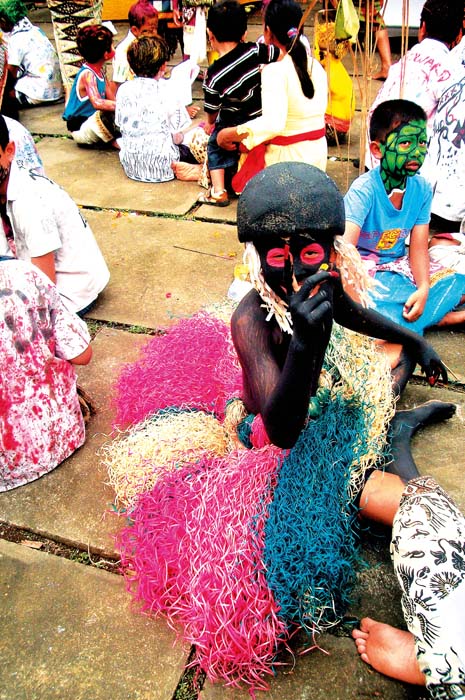We’re sure you already know that Balinese culture and beliefs date back centuries. Religion is inseparable from everyday life, from simple daily rituals to grand temple festivals. No opportunity is lost to worship their gods in an unending series of ceremonies; mantras are chanted endlessly.
Barong Procession in Baturiti
In Baturiti, one of Bali’s most dramatically beautiful rice growing areas, sits the Pura Luhur Pucak Padang Dawa Temple and the site of a spectacular annual ceremony where hundreds of people adorned as Barongs (benevolent lion-like creatures in Balinese mythology) converge to be blessed and to take the holy waters.

It is believed that the strong spiritual powers, belonging to the Hindu God, Sang Hyang Siwa Pashupati, imbue the area with taksu (magical powers) and Barongs are brought here to be blessed.
The area used to be filled with Parasok trees, a kind of spiny relative to the Pandanus, used to create the distinctive hair and the torso for the Barong. Sadly, the very popularity of this beautiful site has caused its demise, as the trees were cut to make way for bigger roads and more parking. But the spiritual strength remains and at each and every Odalan ceremony,
Barongs come with their people from all over Gianyar, Tabanan, Badung and Denpasar to receive new blessings and be cleansed with holy waters (air suci), thus strengthening the spiritual bond.
During the Odalan ceremony, thousands of devotees converge on the hill temple, and long processions of white garbed men and women wearing colourful kebaya (traditional dress) can be seen threading along the narrow roads.
The Barongs converge at the upper or inner temple where cleansing ceremonies proceed until long after noon, when it is time for them to take the waters. Each Barong descends from the temple accompanied by tranced attendants and others baring strange paraphernalia, the significance of which one could only guess at. The visuals are amazing. The sight of so many Barongs is just magnificent.
Tenganan Pengrisingan
Just outside Candi Dasa is the little village of Tenganan, the traditional home of some of Bali’s original people, the Bali Aga.

Long before the Majapahit Empire’s rulers, artisans and courtiers moved lock stock and barrel to Bali to set up their gorgeous new empires and Tenganan, and other nearby villages, were happily living with their own cultural ways.
While the village has ceremonies throughout the year, their biggest celebrations lie in June or July when the Usaba Kasa ceremony lasts for a week or more and draws visitors from near and far.
At this time there is dancing and strange ceremonies, as well as the biggest draw – the perang pandan, when the village’s best men are dressed in sarongs ready to beat each other with spiny pandan leaves. This bizarre ceremony, although originally undergone to please the gods, is now equally pleasing to an overexcited crowd.
Next comes the Rejang (dance of the virgins) which is performed by the girls of the village and is far gentler. This sedate, formal dance is spectacular, mostly for the amazing headdresses, which can take days to produce as frangipani flowers are painstakingly folded into shapes and attached to the main frame which may include golden foil flowers and all kinds of other innovative ornaments.
The visual aesthetics and anticipation make this thrilling to behold. After the gods have been entertained, energies balanced, and offerings made, the girls go off to change for the next ceremony – lunch!
The Flowers of Asak
Asak is a Bali Aga village – a sort of second cousin to her better known village of Tenganan near Candidasa and one of three located in the vicinity of Perasi, famed for its once virgin white beach (Pasir Putih).
But the roots of Asak are deep and while things may change on the surface, underneath that smooth flowing surface nothing much has changed for centuries. Sure there are more motor bikes now, but the village elders and the keepers of Adat – the traditional culture and belief systems – make sure that the old ways are preserved as best as possible.
So each ceremony time the girls of Asak dress up in their best costumes. The stately Rejang is the dance de jour, the dance of choice and each selected girl wears a headdress of folded frangipani that mother and probably grandmother and a few aunties, have taken days to prepare.
Each one is a beautiful and intricate piece of artwork, with hundreds of folded flowers arranged. Many have a Hindu Swastika, which represents peace and harmony, included as part of the design.
When the appointed day comes and all preparations are made, the girls parade though the village. The dances are the highlight of the day which includes the whole village feasting on a freshly slaughtered pig with piles of Sate and Lawar and delicious Asak rice. The ancient gamelan with iron pegs is brought out to accompany the stately dances and the whole day is quite charming.
To find out more, it is best to contact the Karangasem Tourist office in Ampalura or check their website. They sometimes have excellent information about forthcoming events.
Tegallalang Little Demons
Every two years in the Balinese Calendar, the inner courtyard of Pura Duur Bingin in Tegallang, near Ubud, will see the children of the village gathering with their faces and bodies painted in garish, scary images and patterns.
Each of the them will carry a slender staff made from the branch of a palm tree, decorated with colourful flowers and young coconut leaves. This is the time when the village will be flooded by these little demons, as they roam around making loud noises in the area to chase away evil spirits.
The children represent Panjak hana-tan hana, which refers to various supernatural beings, ranging from the Bhuta Kala (spirits of evil) to the Wong Samar (human-like residents of isolated gorges and deep jungles).
This ritual serves to purify the village through the noisy parade; and the appearance of the scary-looking children is believed to pacify the supernatural beings so they will not disrupt the upcoming temple anniversary ceremony.
The screams of these hundreds of children will definitely turn the quiet village into a wild hullabaloo. As they parade down the main streets and make a stop in every temple they pass along the way, the parents will line up on the sides of the street, encouraging their children to scream and distributing refreshments to them. The procession normally lasts for three hours and ends up back at Duwur Bingin temple.











